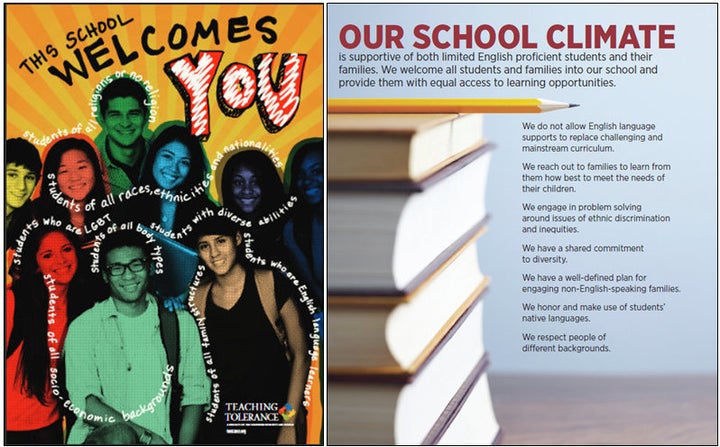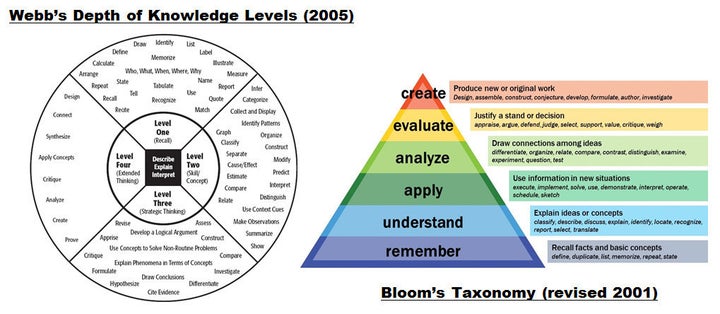American culture is infected with a surge of anti-immigrant sentiment. In this climate, if our schools don’t deliberately display a welcome mat for EL students, we indirectly hang them with a No Solicitors sign.
Two of my best friends are also teachers and our conversations always circle back to how we can better serve students. We love our students with a loyalty so fierce that it’s hard to trap into words. So I’ll lean on Their Eyes Were Watching God (1937) where the unparalleled Zora Neale Hurston gives lyrics to our feelings. Nanny tells her granddaughter “Ah couldn’t love yuh no more if Ah had uh felt yo’ birth pains mahself... Every tear you drop squeezes a cup uh blood outa mah heart. Ah got tuh try and do for you befo’ mah head is cold.”
Before my head is cold, I want to illuminate some strategies to better engage English Learner students (EL formerly labelled English Language Learners or ELL). Forty six percent of the students I currently teach are categorized EL. For most, their first language is Arabic or Chaldean, followed by students who speak Albanian, Bengali, Bosnian and a then a smattering of Hmong, Polish, Urdu, Spanish, and Vietnamese speakers. According to the US Department of Education, we served 9.3 percent English Learners (an estimated 4.5 million students) during the 2013-2014 school year. Although that is the most-current published data, we can safely assume that we serve closer to 10 percent English Learners in 2016.
For clarity, the EL students to whom I refer have tested able enough to be mainstreamed into classes with students who speak English only. Beginning English Learners are segregated into classes with other EL students, and by law receive supports such as an additional teacher and modified assignments. Even though some EL high school students have tested out of segregated classrooms, they may read, write and understand English at a second or third grade level.
So, we have a challenge to say the least. How schools respond to this challenge reveals whether we believe in equity as a practice or a theory. Certainly, there are necessary systemic changes outside of teachers’ control. I address some (such as changing our source texts) in a previous article. Yet, there are changes we can make today that will bridge the gap for English Learners.
By all measures, I have the same level of success with my EL students as I do with my English-only students. I have recently found the pulse of why. Until education becomes a panacea of parity, there are three strategies we can employ today to better serve EL students and their families:
1.) Be Deliberately Welcoming
American culture is infected with a surge of anti-immigrant sentiment. In this climate, if our schools don’t deliberately display a welcome mat for EL students, we indirectly hang them with a No Solicitors sign.
As soon as students sit in my classroom they know that I admire and accept languages other than English. All they have to do is look to the front wall where I proudly display a note from a former student that is written in Arabic. Students are mystified and often ask in disbelief “you like Arabic?” My answer is always yes, of course.

English Translation: Miss Sowinski is the best teacher in the world.
When students speak in a language other than English in my classroom I perceive it as their time to breathe. Speaking, reading, writing and listening to a second language all day is exhausting. I respect their space when my students have the opportunity to converse with one another in their primary language. I also don’t assume their language is some kind of code developed to ridicule me. Moreover, kids will gossip about their teachers in whichever language they speak. I can handle that fact considering I’m the one who signed up to teach adolescents.
Colleagues of mine who champion assimilation demand that EL students recite the Pledge of Allegiance and ban non-English languages in their classrooms. They busy themselves with a fool’s errand because aside from being insulting (and usually racist), assimilation is nothing but a ruse. People will always see race and acknowledge difference: learning to see diversity through a prism of equity is the challenge Americans have not yet met.
Districts may be unwilling or unable to provide in-depth professional development, but The Southern Poverty Law Center’s education wing called Teaching Tolerance provides best practices for free right here. More specifically, be deliberately welcoming to EL students and display the following Teaching Tolerance posters in your hallway and teachers’ lounge today:

2.) Admit That the Real Deficit is All in Our Heads
In education, deficit thinking refers to how school systems are built upon an underlying belief that particular ways of learning and demonstrating knowledge are superior. Therefore, students who vary from this model are not simply different, they are deficient. We become mired in what we consider our students’ deficits while overlooking the numerous strengths they bring to the table. It’s easy to become lost in the lack. More to the point, deficit thinking facilitates our comfort with blaming EL students for low standardized test scores.
Rather than praise their intercultural literacy, we lament their unfamiliarity with American cultural norms. Instead of lauding the number of languages they can speak and read, we fixate on their gaps in English. We overlook how most non-EL students can hardly conceptualize geography whereas EL students have traversed continents. In short, when we practice deficit thinking we ignore our EL students’ assets and are hyper-aware of what we perceive as their shortfalls.
Some teachers are paralyzed from conservative education [de]formers high–stakes testing and beg the question: how can students who are developing English proficiency possibly reach the summit of Bloom’s taxonomy or the desired depths levels of Webb’s critical thinking?
Please stay with me as we travel around the river and through the woods to unearth the most underutilized, crown jewel of EL assets: higher order thinking skills. Teachers try to elevate students’ critical thinking based mostly on two models: Bloom’s Taxonomy (revised in 2001) and Norman Webb’s Depth of Knowledge (DOK) Chart (2005). Essentially, rote memory skills are lower-order thinking and integrating multiple sources into a cohesive, innovative whole is higher-order thinking.

Now, to effectively ignite EL students’ potential, we need to integrate the higher-order thinking models with American anthropologists Edward and Mildred Hall’s (1990) work defining differences between high context and low context communication. High context cultures originate from Africa, Asia, Eastern Europe, the Middle East and South America; whereas low context cultures hail from North America and Western Europe. Countless international business texts have been written about Hall’s classifications, but naturally, I’m mostly interested in how communication impacts learning.
Those of us from low context cultures (i.e. White people) tend to use information from one, single source to compose an answer. Conversely, people from high context cultures gather information from multiple sources and then synthesize an answer. Therefore, our EL students from high context cultures already practice daily behaviors at the top of Bloom’s pyramid and in the most cognitively complex level of Webb’s DOK. Holy asset, Batman!
A conscious shift from deficit to asset thinking will become a self-fulfilling prophecy of increased student participation and heightened test scores.

Photograph by Januarain Photography and Text by Regan Manwell Sowinski
3.) Redefine Then Redesign the PTA Model
Believe it or not, many educators are under the wrong impression that EL parents aren’t involved in their children’s education. In part this is because many White Americans judge parental involvement by public behaviors such as: attendance at Open House, Parent/Teacher Conferences, sporting events and PTA meetings. While, in stark contrast, many parents from high context cultures judge parental involvement by private behaviors such as: encouraging sleep and nutrition, providing a comfortable space for homework, and teaching deference to authority.
This disconnect creates the destructive misunderstanding that many White American educators believe: EL parents are not active participants in their children’s education, nor do they value it.
Well-intentioned districts adopt school-to-parent communication protocol based on national survey results that claim parents prefer electronic or internet-based sources like email, e-newsletters, district websites, and parent portals. In direct opposition, research shows that Arab American mothers prefer communication from school that is initiated by a non-automated phone call and followed by an in-person meeting without a preset time limit. So, if school personnel primarily engage in e-communication with parents, they should not be surprised when EL parents don’t respond. Yet, non-EL educators frequently complain that EL parents are seemingly disengaged.
I mentioned this research at a staff meeting and our brilliant EL Tutor (who is fluent in Arabic, Chaldean and English) offered to personally call and invite EL parents to our Open House. As a result, EL parent participation quadrupled. It is rare and wondrous when a problem can be solved so easily.
When the parents arrived, I had rearranged my classroom into a living room setting with the help of an unused teachers’ lounge couch. My administrator provided cookies, coffee, water and mints to improve our hosting skills. As a result, I mimicked a social setting (rather than an academic one) to more appropriately welcome my EL parents. In a setting better-suited to high context cultures, I made genuine connections with my students’ parents that will stand the test of time.
The Three Strategies in Action
I earnestly try to practice what I preach. Last year, I taught an Iraq war refugee who had been in America for less than a year. He spoke and wrote fluent Arabic, knew conversational Chaldean, and very little English. His visible scars were a daily reminder that he had been stabbed and left for dead before making his way here. What’s more, his first name is Hussein – a name that picks a visceral chord in every American born before Desert Storm.
I have the good fortune of being raised in an Arab American community and am a gluttonous fan of Middle Eastern cuisine. So, I began building a relationship with Hussein by discussing my love of Iraqi food. I was in luck, because Hussein is an accomplished cook.
Fair or not, teachers are obligated to teach English Language Learners grade-level appropriate content irrespective of their English proficiency level. I set a goal to teach Hussein figurative language before he completed my course. I knew that our shared love of dessert would be the gateway.
I approached Hussein with the certainty that he is capable of higher order critical thinking. If I didn’t believe that, I wouldn’t have bothered to build the scaffolding he needed to learn new skills in English. I may have built the scaffold, but Hussein locked the wheels.
When I instructed the class on recognizing and writing similes, I intentionally included Hussein with a personalized example: “I love teaching like I love knafeh!” Knafeh is a traditional Arabic pastry (often filled with delectable cheese) and I crave it pretty much all day, every day. Hussein’s whole face lit up and we laughed together. Engaging his culture was the first of many successful figurative language lessons.
At the Senior Awards Ceremony, I presented him with the Conquering Adversity Award. He shook my hand, looked into my eyes and said “Miss, I love you like knafeh”.
I may never see Hussein again, but he taught me what it truly means to teach every student.
Regan Manwell Sowinski makes the resistance visible at www.ResistTrumpWristbands.com
